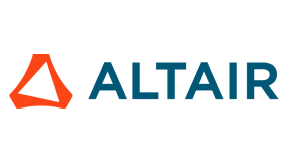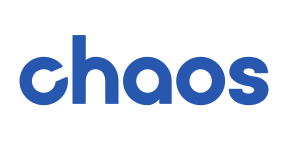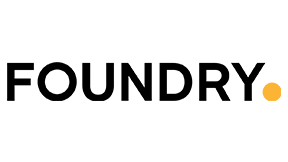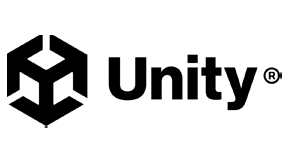NVIDIA OptiX™ AI-Accelerated Denoiser
OptiX 8 includes an AI-accelerated denoiser based on a paper published by NVIDIA research "Interactive Reconstruction of Monte Carlo Image Sequences using a Recurrent Denoising Autoencoder". It uses GPU-accelerated artificial intelligence to dramatically reduce the time to render a high fidelity image that is visually noiseless. This provides ultra-fast interactive feedback to artists, allowing them to iterate their creative decisions more quickly and achieve their final product much faster.
The AI-accelerated denoiser was trained using tens of thousands of images rendered from one thousand 3D scenes. The training data was given to an auto encoder similar to the one described in the paper and run on an NVIDIA® DGX-1™. The result is an AI-accelerated denoiser which is included in the OptiX SDK that works on a wide number of scenes. To further expand quality and performance.
For more information on neural network training, please see links at the bottom of this page.
In the video below, the right side has AI-accelerated denoising active.
Partners
(Click logos to learn more)
Thea Render is a physically-based global illumination renderer of high quality. It is a unique renderer that is able to render using state-of-the-art techniques in biased photorealistic, unbiased and GPU modes. Thea Render comes with its own standalone application (Studio) with various tools, material editor and advanced staging operations along with integration (plugins) on various popular modeling solutions.


Learn more about Thea Render >Altair® Thea Render® v2.0 integrates NVIDIA® OptiX™ denoiser, dramatically accelerating production of final renders. Users can take advantage of this optimized workflow, creating out-of-the-box, stunning photorealistic images in a fraction of previous render times.
Dr. Ing. Ioannis Pantazopoulos, VP Rendering Technology, Altair
Arnold is an advanced Monte Carlo ray tracing renderer. It is designed for artists and built for the demands of modern animation and visual effects production. It is available as a standalone renderer on Linux, Windows and Mac OS X, with plug-ins for Maya, 3ds Max, Houdini, Cinema 4D, and Katana. With an integrated OptiX denoiser, Arnold takes advantage of NVIDIA AI tech for accelerated interactive rendering.
 Click to enlarge
Click to enlargeLearn more about ArnoldThe OptiX Denoiser is an invaluable option for interactive workflows in Arnold. The artist can create and move around geometry and lights and get immediate noise-free visual feedback, even for challenging rendering scenarios.
Frederic Servant, Arnold Development Manager, Autodesk
cebas Visual Technology, founded in Heidelberg, Germany and headquartered in Victoria, BC Canada, has been developing 3dsMax plugins for visual technology since 1988. Following the launch of our latest finalRender trueHybrid™, cebas' mission as always, is dedicated to getting the most sophisticated renderer into the hands of the artists affordably by incorporating latest NVIDIA GPU technology combined with cebas CPU enhancements, to achieve a powerful as well as an unique mix of processing power. Our new finalRender's latest addition is the NVIDIA's OptiX 5.0 AI Denoiser feature. Users can expect ongoing innovative updates as finalRender progresses.
 This image shows the OptiX AI-Denoiser running in finalRender at 100 samples after only 45 seconds
of rendering.
This image shows the OptiX AI-Denoiser running in finalRender at 100 samples after only 45 seconds
of rendering.
Learn more about finalRender >Our very first integration tests revealed right from the start that NVIDIA has created an exceptional piece of software engineering by combining the power of AI and their powerful GPU hardware to surmount what has bothered every single GPU software developer for years - Noise in the image. The use of AI Neuronal Network technology in OptiX 5.0 to enhance the process of denoising and cebas' engineering work on finalRender's trueHybrid™ technology offers a bright future towards higher quality photo-realistic images in much lesser time.
Edwin Braun, CEO & Co-founder, cebas Visual Technology
Chaos is a worldwide leader in computer graphics. They create the technology that helps artists and designers create photoreal imagery and animation for design, television, and feature films. Their physically-based rendering and simulation software is used daily by top design studios, architectural firms, advertising agencies, and visual effects companies around the globe. Their research and development in cloud rendering, material scanning, and virtual reality is shaping the future of creative storytelling and digital design.

Learn more about Vray >We’re finding the NVIDIA denoising results to be very impressive on interactive scenes, giving artists a much quicker estimate of what their final result will look like. We believe this will speed the creative process while using our upcoming V-Ray GPU.
Vlado Koylazov, founder, Chaos
Modo’s powerful and flexible 3D modeling, texturing and rendering toolset empowers artists to explore and develop ideas without jumping through technical hoops. Modo® is your starting point for creative exploration.
 Without Denoiser | With
Denoiser
Without Denoiser | With
Denoiser
 Without Denoiser | With
Denoiser
Without Denoiser | With
Denoiser
Learn more about Modo >Modo artists can now expect to see GPU Accelerated Rendering with Optix™ from NVIDIA®. The integrated enhancement provides incredible speed and quality for their product and arch-viz creations. Developed and integrated in collaboration with NVIDIA®’s award-winning engineering team, Optix™ has been optimized specifically for Modo 12.2 and future releases.
Shane Griffith, Senior Product Manager, Foundry
NVIDIA Iray employs OptiX technology for optimal performance in both its path tracing and ray tracing render modes. Iray is a state of the art, yet easy to use, photorealistic rendering solution provided as an SDK for seamless integration into custom tools and within industry-leading products from the likes of Dassault Systemes and Siemens PLM.

Learn more about Iray >

Pixar Animation Studio's new material editing tool "Flow" enables their artists to interactively edit rich, complex shading networks. Flow provides live real-time feedback with full, multi-bounce progressive ray tracing using OptiX.
 Pixar Flow material
editing tool. Image courtesy of Pixar Animation Studios
Pixar Flow material
editing tool. Image courtesy of Pixar Animation Studios
Watch SIGGRAPH talk on OptiX integration in Flow >
Redshift Rendering Technologies Inc was founded in early 2012 in Newport Beach, California with the goal of developing a production-quality, GPU-accelerated renderer with support for the biased global illumination techniques that until now have remained squarely in the CPU-only domain.
Learn more about Redshift >With OptiX 5.0, NVIDIA continues to lead the way for the use of AI in rendering for design, character generation and the creation of virtual worlds. Integration of OptiX 5.0 was a no-brainer for us — being both easy and free, it turbocharges the creative process and improves productivity for our users.
Panos Zompolas, chief technology officer and co-founder, Redshift
Houdini is a 3D animation software application developed by SideFX, based in Toronto. SideFX adapted Houdini from the PRISMS suite of procedural generation software tools. Its exclusive attention to procedural generation distinguishes it from other 3D computer graphics software.
 result of denoiser shown on the left half of image above
result of denoiser shown on the left half of image above
Learn more about the Houdini denoiser integration>
Unity is the creator of the world’s leading real-time 3D development platform, giving users the most powerful and accessible tools to quickly create, easily operate, and fully monetize amazing immersive and interactive experiences. Unity empowers anyone, regardless of skill level and industry, to maximize their success.
 By using AI denoising, artists can spend more time creating beautiful renderings than battling noise. Robust denoising means that creators can focus on iterating the artwork, thereby optimizing workflow efficiency and output quality.
By using AI denoising, artists can spend more time creating beautiful renderings than battling noise. Robust denoising means that creators can focus on iterating the artwork, thereby optimizing workflow efficiency and output quality.
Learn more about Unity >
Performance
The OptiX AI denoising technology, combined with NVIDIA Tensor Cores, delivers improved performance over previous-generation GPUs and enables fluid interactivity in complex scenes.

Relative Performance
Tests run on a workstation with Intel Core i9-12900K, 3.20GHz, 5.20GHz Turbo, 32GB RAM, Windows 11 Enterprise. Performance testing completed with NVIDIA OptiX 6.5 and driver version 528.49, 4K render resolution.
Additional Resources
For more information on the AI-accelerated denoiser, take a look at the articles below.
 Click to enlarge
Click to enlarge










